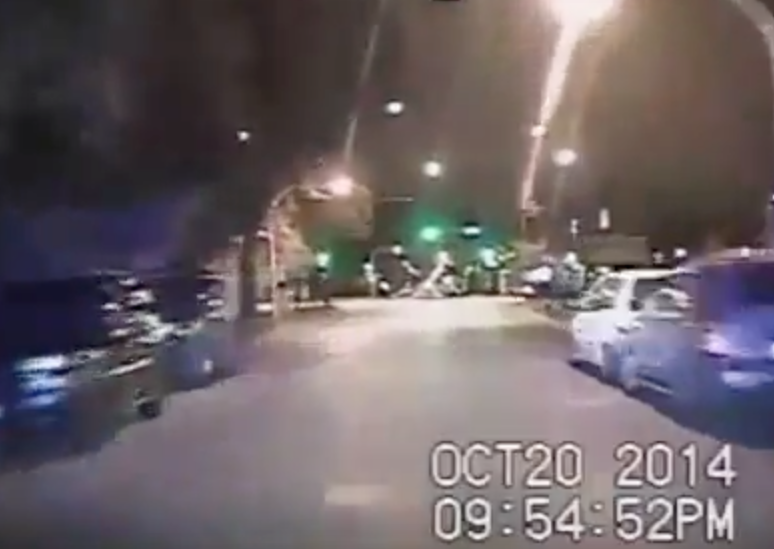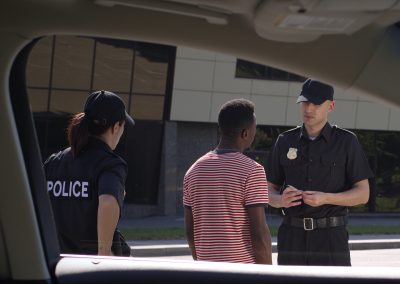The very much anticipated court-ordered release of dashcam video that shows how, a 17-year-old Chicago boy, Laquan McDonald, was shot to death by a Chicago police officer is out.
It was billed as “incredibly hard to view” and “appalling.” The billing was spot-on as it is disturbing to watch, a young man being shot repeatedly. It’s hard if you’ve never seen real violence and it’s especially difficult as a police officer who knows all to well the myriad of things that fly through your mind when confronting potential and immediate deadly force.
It is hard to watch. It is also difficult to put it into reality without complete information.
And this video is anything but complete. People will see what they want, but the complete truth isn’t available yet.
That being said …
My hope is that some of the people who will watch will not use this video as an excuse to tear apart neighborhoods, rob and burglarize stores, burn down buildings and commit acts of violence. I would implore them to put their energies toward more constructive action.
I can only hope that others don’t use this video and distressing incident it graphically depicts to demonize 13,000 Chicago cops and nearly 800,000 law enforcement officers in this country.
I also hope, as bad as this is and has been billed, that justice is allowed to take it’s course.
We can only hope.
In reality, from the perspective of a 30-year cop, detective and commander of a homicide task force, the video is troubling on several levels—legally, ethically and even how it is we train to deal with such high-stress situations, which is too often, unfortunately, poorly.
Besides that, people do and will have questions. Here are several.
The Officer
Why is it that the officer fired seconds after exiting his squad car?
I watched it several times and I’m still asking whether McDonald was turning towards the officer or the officer was moving towards McDonald. Which is it? Difficult to determine order and time without sound.
Why did that officer fire 16 rounds over a period of approximately 14 seconds (according to reports), almost all of them while McDonald was on the ground?
Why did none of the other officers fire a shot?
After emptying his magazine the shooting officer began to reload (as he should) when another officer told him to hold his fire—would he otherwise have fired more rounds at the prone McDonald? (Again based on reports).
The Background
What questions won’t be asked and therefore not answered, except maybe in court are the following.
How much actual training in high-stress situations did the officer have?
What was his perspective in those 15 – 20 seconds?
Was he under some other external stressors that affected his perspective, judgement and reaction and response?
What was he seeing in those moments?
How much training on understanding edged weapons does he have?
Above & Beyond
Leaving the event itself aside for a moment, there are further questions. These reach into the upper echelons of the political world in both Chicago and Cook County, both of which have a history of running damage control when the truth is ugly, as it appears to be in this case.
What took so long (the shooting occurred on Oct. 20, 2014) for the officials of the police department, the State’s Attorney’s Office and the Office of the Mayor to investigate and file charges?
Were the filing and timing (as the video was being released) of murder charges politically motivated? Were they to help quell the imminent public reactions that may involve violence and damage to property?
Why was the family given a settlement of $5 million almost immediately after the incident?
Did the upcoming mayoral election affect the behavior of the Chicago brass and the politicians?
Why was the officer fired minutes before the video was to be released? Was it orchestrated for political gain or community appeasement?
I’m not asking these questions to be provocative, cause a stir, accuse or indict the motivations and/or the principles of those involved. In fact, I’m not the one asking them. I found them all online in a matter of minutes.
Conclusion
There seems to be a serious lack of trust of those in government over the past several years. I believe this happens for many reasons. But a lack of transparency and obvious political motives driving decisions is one of them.
As a government we seem too often not to learn from our mistakes. Rather, we learn to avoid responsibility and instead point fingers and place blame on others. This mentality avoids the opportunity to make corrective actions.
There’s plenty to learn here, from the actual episode to what may have led up to it. In addition, it is—or rather was—an opportunity to build relationships and to determine what went wrong and how we can do better.
Will that happen? Or will finger-pointing be the end-result? If it is, we are bound to repeat the mistake and cause fresh pain in the communities we are entrusted to protect.











0 Comments